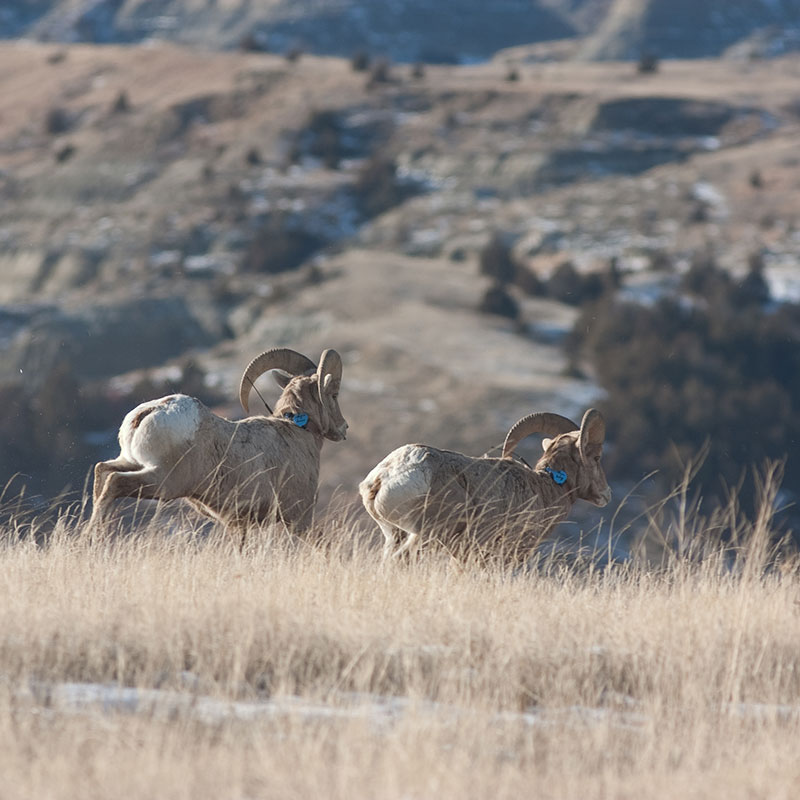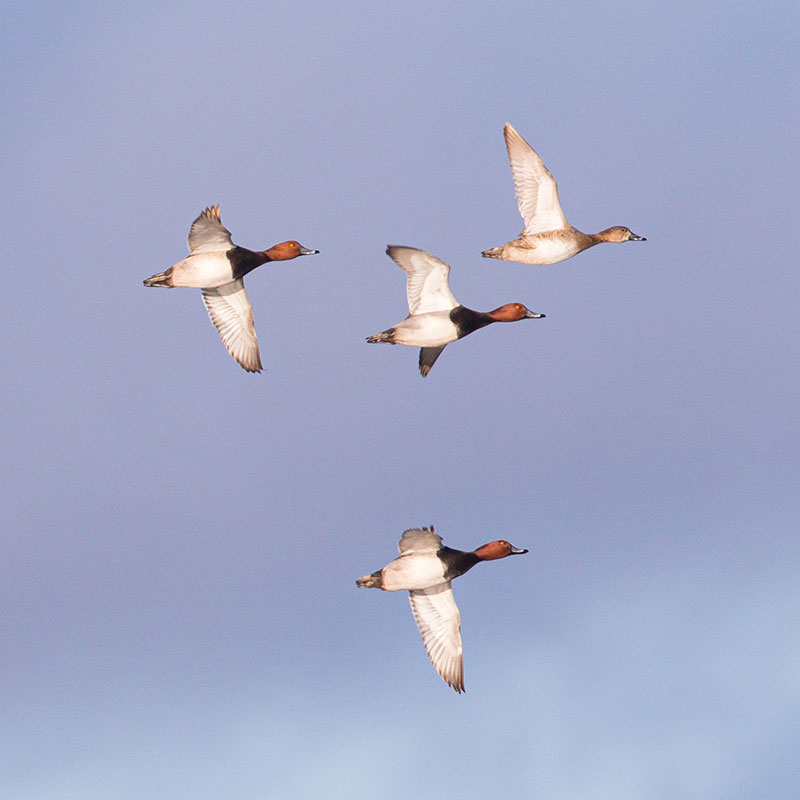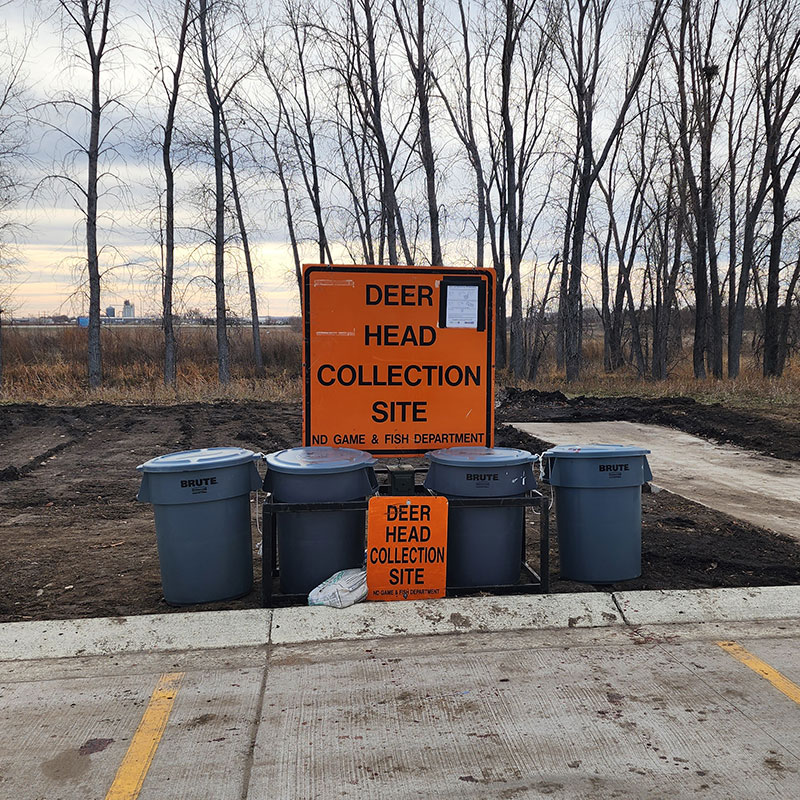2023 Year in Review
Scott Peterson and Ron Wilson
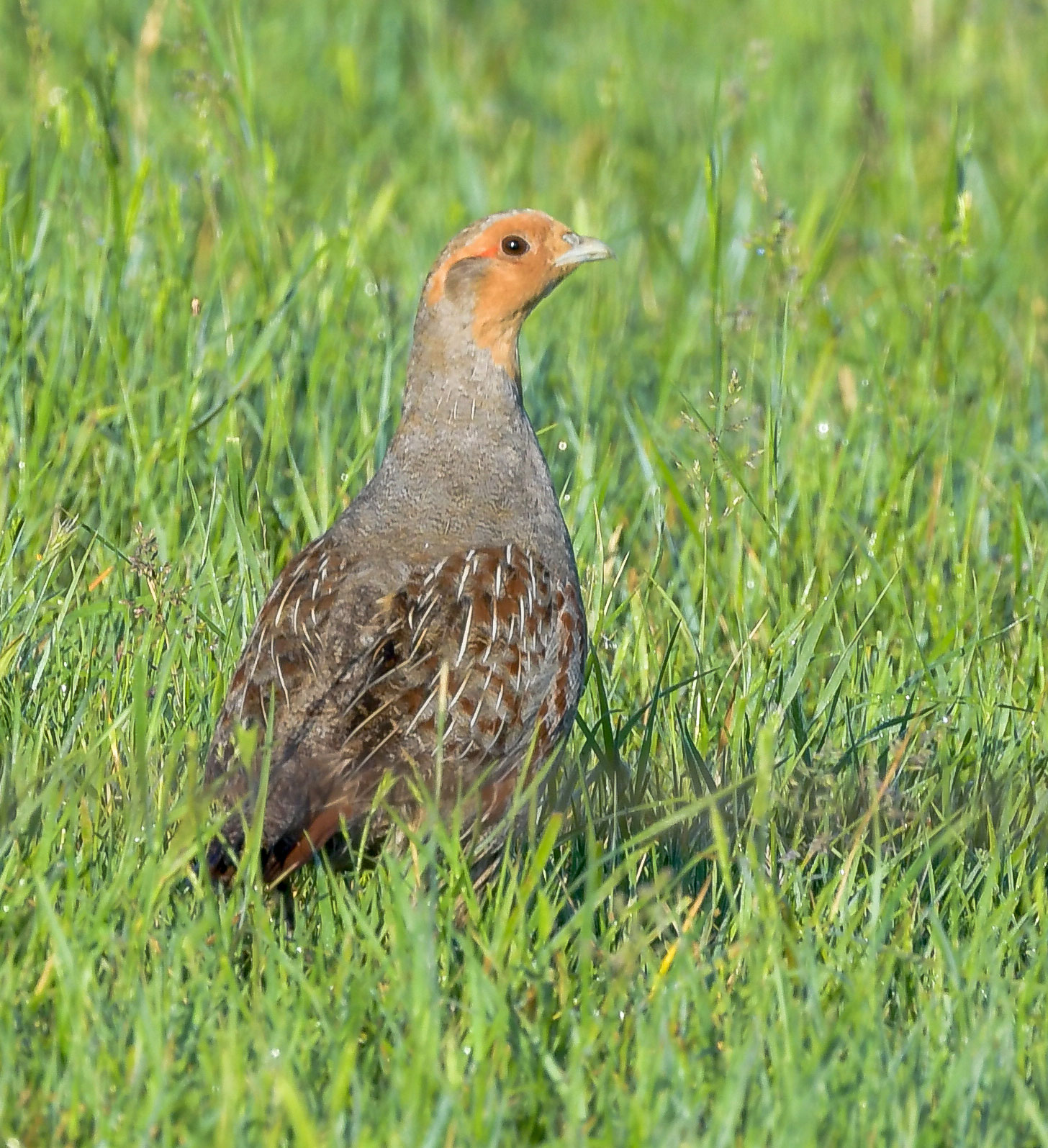
As we look back over the past year, we are reminded of how fortunate we are to live in this great state. In a day and age when many people can work from virtually anywhere, our citizens still choose to live, work and play in North Dakota.
We often say that quality of life is a big reason why people have made that choice. We also know that for many of those same people, hunting and fishing opportunities factor into that decision.
Even after getting through a near-record breaking winter and all the challenges that came along with that, we can still appreciate the positives of living in North Dakota, including the promise of spring, summer and fall.
Despite the harsh winter we experienced last year, fishing remained outstanding across the state. While much attention is always given to the big waters – Sakakawea, Oahe, Missouri River and Devils Lake – our state’s smaller lakes in 2023 produced fishing opportunities that were off the charts.
Much of the credit for that, along with an appreciative nod to Mother Nature, goes to our team of fisheries biologists, technicians and development staff who monitor fishing population status, make stocking recommendations, and then ensure that our anglers have access to those amazing resources. Harsh winters, with the abundance of snow and runoff that often comes with them, can be a boon to anglers.
On the flip side, extreme winter weather is rarely a good thing from a wildlife perspective. As expected, our deer populations, both white-tailed and mule deer, took a significant hit this past year. While much of the blame can be placed on severe winter weather and epizootic hemorrhagic disease, some of the reason for the low numbers, especially in the case of mule deer, can also still be attributed to the severe drought of 2022.
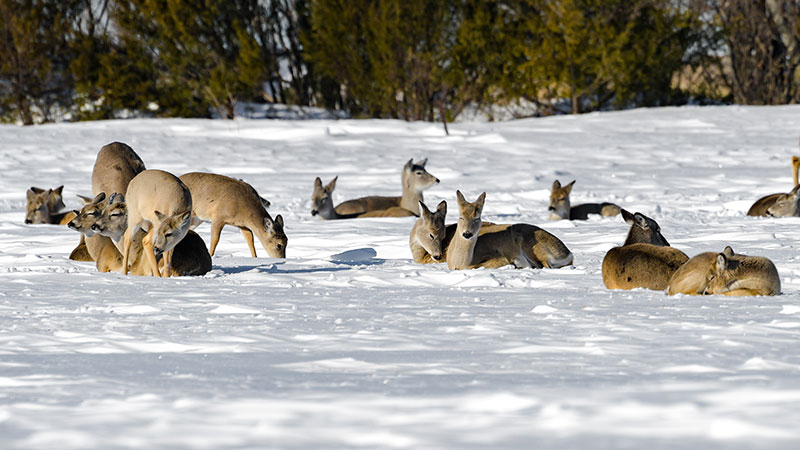
As we’ve said in the past, with favorable weather and habitat conditions, deer numbers can and will rebound to a much more positive status. Yet, with far fewer acres of quality habitat on the landscape than in the past, expectations should be tempered accordingly.
Unfortunately, for the foreseeable future, we’ll also be dealing with a disease in our state’s cervid populations known as chronic wasting disease. Much has been said and debated about CWD, but we will continue to manage the disease based on the best science available.
The northern badlands population increased 4% from 2021 and was the highest count on record. The southern badlands population was unchanged at the lowest level since bighorns were reintroduced there in 1966.
Big game biologists were encouraged to see the count of adult rams down just slightly from last year, and adult ewes were at record numbers. Unfortunately, following a record summer count of lambs, winter survival was only 54%, the lowest level on record and well below the long-term average. The lamb recruitment rate was also near a record low. Nearly six months of harsh winter conditions was the likely cause of poor winter survival of lambs.
Department biologists count and classify all bighorn sheep in late summer, and then recount lambs the following March as they approach 1 year of age to determine recruitment.
Department staff, in conjunction with biologists from the Three Affiliated Tribes Fish and Wildlife Division, also reported the bighorn sheep translocated in January 2020 from Rocky Boy’s Reservation in Montana to the Fort Berthold Reservation performed exceptionally well their third year in the state, as the population has nearly tripled.
There are currently about 470 bighorn sheep in the populations managed by the Game and Fish Department, National Park Service and the Three Affiliated Tribes Fish and Wildlife Division. The next benchmark is 500 bighorns in the state, which seemed improbable just a few years ago. And considering how severe last winter was, we were very encouraged by the results of the 2022 survey.
Bump in Fall Flight
The North Dakota Game and Fish Department’s 76th annual spring breeding duck survey conducted in May showed an index of more than 3.4 million birds, up just 1.5% from last year.
And like 2022, the breeding duck index for 2023 was the 23rd highest on record and stands at 39% above the long-term (1948-2022) average.
Pintails, a species of management concern, appeared to respond to excellent nesting conditions where available. These birds have struggled continentally, and it was good to see them respond to areas with good habitat conditions in the state.
The number of broods observed during the Department’s July brood survey were up 79% from 2022, and 88% above the 1965-2022 average index. The average brood size was 6.5 ducklings, down 10% from 2022.
The estimated number of Canada geese (297,914) in North Dakota during the May survey was down 23% from the 2022 estimate, which was a record. Nesting efforts appeared to be reduced and delayed as few Canada goose broods and lower than normal numbers of nests were observed during the survey. Waterfowl biologists said there were many pairs and small groups of Canada geese observed during the survey on territories. Pairs may have simply been delayed, but some flooding of nests occurred during early May in areas with 4 to 8 inches of rainfall during active nesting.
The 2023 fall flight forecast for ducks from North Dakota was expected to be up 23% from 2022.
Mule Deer Decline
Mule deer declined across the western edge of the state following relentless winter conditions. The 2023 spring index for mule deer in the badlands was 29% lower than the 2022 index and 5% below the long-term average, making it the lowest spring index since 2014.
Consequently, licenses were significantly reduced for 2023. The Game and Fish Department made available 1,600 antlered licenses and 650 antlerless licenses in 2023, which was 3,500 fewer licenses than 2022.
There remain many challenges facing the future population recovery of mule deer in the badlands. Encroachment of juniper in mule deer habitat, direct and indirect habitat loss due to oil development, predators and weather, including extreme winters, are all challenges facing long-term population recovery of mule deer in the badlands.
- Whole carcasses of animals harvested in North Dakota could have remained in the deer unit, or now could have been transported anywhere in the state. However, carcass waste must have been disposed of via landfill or waste management provider. This did not apply to heads dropped at CWD collection sites or lymph nodes submitted for CWD surveillance. Taxidermists and game processors could also accept intact carcasses of animals harvested within North Dakota but assumed responsibility for disposal.
- A new management strategy that allowed baiting restrictions to be removed in a unit if the number of adult deer equivalent to at least 10% of the gun licenses allocated in the unit were tested for CWD within a year, and all the results were negative. If the sampling goal was not met or CWD was confirmed in the unit, the baiting restriction remained.
- No new units were added to the baiting restriction list for 2023-24. Due to the timing of finalizing the proclamation, a one-year pause was placed on adding new units. Units 2K1 and 3B2 are scheduled to be added to the restriction list in 2024 due to a positive CWD detection during the 2022 hunting season within 25 miles in an adjacent unit. They would not be added if the 10% goal was reached in 2023 and all CWD test results were negative.
- Hunters were prohibited from transporting into North Dakota the whole carcass or parts, except the lower-risk portions, of deer, elk, moose or other members of the cervid family harvested outside of North Dakota.
- State Game and Fish Department officials will conduct surveillance of the state by region on a four-year rotation. In 2023, the CWD surveillance effort consisted of deer gun units in southeastern North Dakota. Outside of that area, hunters could still have their animal tested by taking it to a Game and Fish district office, any deer head collection site (primarily located in the surveillance area) or by using a mail-in self-sampling kit. A unit outside the annual surveillance zone was still eligible to have a baiting restriction removed if the sampling goal was met, or can be added as a restricted unit if a positive was found.
Some Numbers
- 55.7 Million - Number of walleye eggs collected in spring, surpassing the goal of 50 million eggs.
- 8.2 Million - Number of walleyes stocked in 151 waters across the state.
- 944,000 - Number of chinook salmon eggs collected during the Department’s annual salmon spawn.
- 6 - Number of licenses allocated, including one auction license, for the bighorn sheep hunting season. A record 20,290 applications were received for bighorn sheep.
- 9.8 Million - Number of acres of private land electronically posted.
- 800,000 - Approximate number of PLOTS acres on the landscape in 2023.
- 30% - Statewide increase in roosters heard crowing during the Department’s spring pheasant crowing count compared to 2022.
Licenses and Permits
| Type | Resident | Nonresident |
|---|---|---|
| Individual Fishing | 40,823 | 16,721 |
| Married Couple Fishing | 11,297 5,491 | |
| Senior Citizen Fishing | 15,234 | |
| Disabled Fishing | 255 | |
| Short-Term Fishing 10-Day | 6,289 | |
| Short-Term Fishing 3-Day | 23,345 | |
| Paddlefish Tags | 3,202 | 556 |
| Commercial Tags | 10 | |
| Retail Bait Vendor | 210 | |
| Wholesale Bait Vendor | 27 | 5 |
| Fish Hatchery | 3 | |
| 2022 Boat Registrations (Third year of 3-year decal) | 8,218 | |
| General Game Hunting | 41,635 | 42,750 |
| Small Game Hunting | 13,201 | 21,996 |
| Combination License | 61,888 | |
| Waterfowl Hunting | 24,627 | |
| Furbearer Hunting/Trapping | 6,434 | 2,609 |
| Fur Buyer | 28 | 4 |
| Deer Gun Hunting | 50,960 | 627 |
| Deer Gun Hunting (Gratis) | 11,987 | 304 |
| Deer Bowhunting | 24,395 | 3,301 |
| Moose Hunting | 341 | |
| Moose Hunting (Preferential Landowner) | 41 | |
| Elk Hunting | 472 | |
| Elk Hunting (Preferential Landowner) | 95 | |
| Turkey Hunting (Spring) | 8,025 | |
| Turkey Hunting (Fall) | 3,708 | |
| Turkey Hunting (Gratis Spring) | 629 | |
| Turkey Hunting (Gratis Fall) | 285 | |
| Habitat Stamp | 103,523 | |
| Shooting Preserve | 10 | |
| Fishing/Hunting Guide | 312 | 55 |
| Taxidermist | 267 | 7 |
| Falconry | 2 | |
| Scientific Collector | 32 | 39 |
| Swan | 1,280 | 917 |
| Sandhill Crane | 2,857 | 2,686 |
| Type Licenses | Applications | Available Received |
|---|---|---|
| Moose | 253 | 26,386 |
| Elk | 599 | 24,091 |
| Bighorn Sheep | 5 | 20,290 |
| Type | Amount |
|---|---|
| Income | $43,927,048 |
| Expenses | $46,846,255 |
| Type | Amount |
|---|---|
| Game and Fish General Fund | $25,630,369 |
| Habitat and Depredation Fund | $5,801,360 |
| Nongame Wildlife Fund | $145,821 |
| Aquatic Nuisance Species Program | $826,733 |
| TOTAL ALL FUNDS | $32,404,283 |
| FIXED ASSETS | $60,318,315 |
| DEPARTMENT NET WORTH | $92,722,598 |


